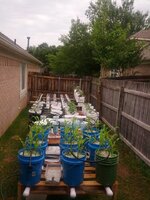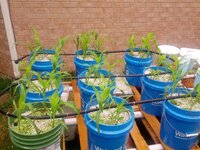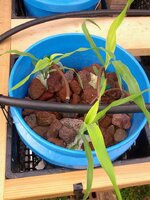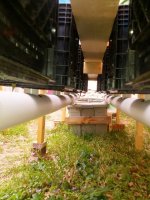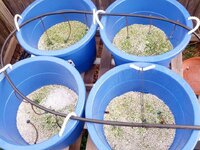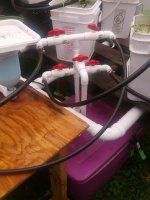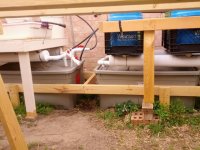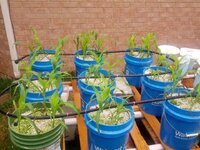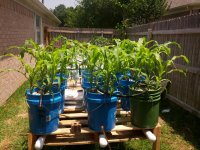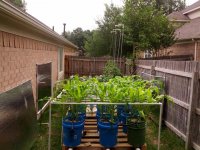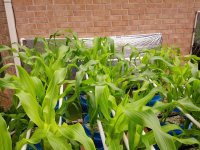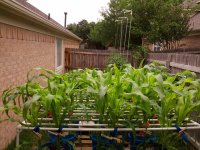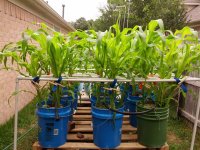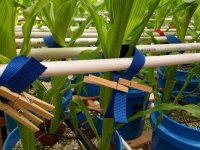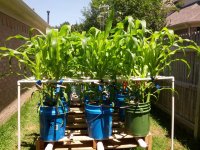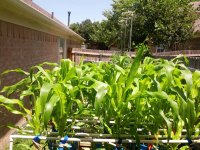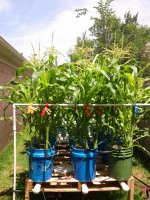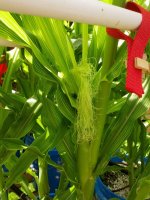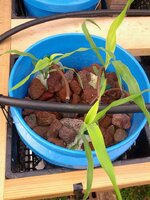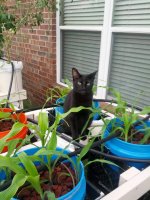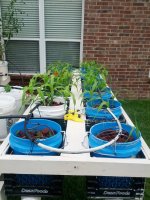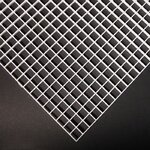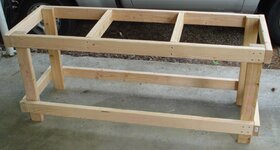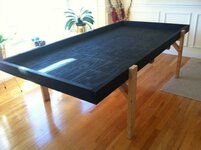SaltwaterServr
Sr. Member
Small deposit miners are at a disadvantage in many ways to junior and large mining companies on many different fronts. The biggest is our limited capital and their advantage of economies of scale.
They used cyanide leaching for exceptionally high recovery rates. We can do the same. The problem is they have a few extra hundred thousand or million lying around to set up processing of waste effluent. We don't have that. Well, if you do, I'm open for adoption.
Really, cyanide leaching of gold and then precipitation of the gold out of solution is a pretty easy process. The thing I'm going to deal with here is an inexpensive solution to the problem of having to dispose of cyanide and also the practical aspects of getting the EPA off our collective backs.
This entire system can be built with materials from Lowes/Home Depot, a hydroponics store online, and an aquarium store online. Simple, easy and I'll show you exactly how I've built several hydroponics systems in the past for fruits and vegetables. This will probably be broken up into different posts so it won't be one huge thing.
First we need a quick understanding of hydroponics. No, it's not for growing weed.
Hydroponics is growing plants where the nutrients to the plants are delivered in a pre-mixed solution rather than coming from in the ground. The plants are grown in a variety of inert (unreactive and nutrientless) substrates.
Hydroponics is a lot more costly than traditional farming/gardening since you're doing more than sticking a seed in the ground and watering when it doesn't rain.
The payoff though worth the time and money. First is that plants can be spaced much more densely, the only limitation you have is how much sun you can get to them. Second, plants grow 2-3 times as fast in a hydroponics set up because they aren't burning energy to try and pull nutrients out of the ground. Third, which isn't really important for us, is that you get 3-4x the amount of production from the plants as a traditional in-ground planting. Also, the plants don't have to fight through soil.
Traditionally in soil you have corn plants at a maximum density of one plant every 8 inches between plants and 20" between rows. In my 3rd generation hydroponic system I grew 5 plants per five gallon bucket and realistically those buckets can be touching each other by row and column. To put it another way, where you can grow a maximum of 21 corn plants in a 4'x4' area, I'm well over 60 plants. And I'm getting three crops to your one.
Soil production gets 21 ears of corn, I get 180+. That production is really going to help us out in getting rid of cyanide.
Here's some photos.
This is a low density first generation system I built. 3 plants per bucket, 27 plants total on a 4x4 palet.
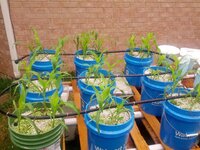
An overall view of the kind of density you can plant for a full garden. When it was the end of the season, my okra, which aren't yet planted, were about 5' over the edge of the roof. Cut them down because we were worried about damaging the shingles in a wind storm.
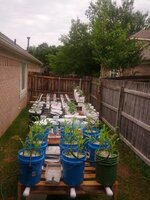
Next up, I'll do a little more show and tell on what you need to get a hydro system running.
They used cyanide leaching for exceptionally high recovery rates. We can do the same. The problem is they have a few extra hundred thousand or million lying around to set up processing of waste effluent. We don't have that. Well, if you do, I'm open for adoption.
Really, cyanide leaching of gold and then precipitation of the gold out of solution is a pretty easy process. The thing I'm going to deal with here is an inexpensive solution to the problem of having to dispose of cyanide and also the practical aspects of getting the EPA off our collective backs.
This entire system can be built with materials from Lowes/Home Depot, a hydroponics store online, and an aquarium store online. Simple, easy and I'll show you exactly how I've built several hydroponics systems in the past for fruits and vegetables. This will probably be broken up into different posts so it won't be one huge thing.
First we need a quick understanding of hydroponics. No, it's not for growing weed.
Hydroponics is growing plants where the nutrients to the plants are delivered in a pre-mixed solution rather than coming from in the ground. The plants are grown in a variety of inert (unreactive and nutrientless) substrates.
Hydroponics is a lot more costly than traditional farming/gardening since you're doing more than sticking a seed in the ground and watering when it doesn't rain.
The payoff though worth the time and money. First is that plants can be spaced much more densely, the only limitation you have is how much sun you can get to them. Second, plants grow 2-3 times as fast in a hydroponics set up because they aren't burning energy to try and pull nutrients out of the ground. Third, which isn't really important for us, is that you get 3-4x the amount of production from the plants as a traditional in-ground planting. Also, the plants don't have to fight through soil.
Traditionally in soil you have corn plants at a maximum density of one plant every 8 inches between plants and 20" between rows. In my 3rd generation hydroponic system I grew 5 plants per five gallon bucket and realistically those buckets can be touching each other by row and column. To put it another way, where you can grow a maximum of 21 corn plants in a 4'x4' area, I'm well over 60 plants. And I'm getting three crops to your one.
Soil production gets 21 ears of corn, I get 180+. That production is really going to help us out in getting rid of cyanide.
Here's some photos.
This is a low density first generation system I built. 3 plants per bucket, 27 plants total on a 4x4 palet.

An overall view of the kind of density you can plant for a full garden. When it was the end of the season, my okra, which aren't yet planted, were about 5' over the edge of the roof. Cut them down because we were worried about damaging the shingles in a wind storm.

Next up, I'll do a little more show and tell on what you need to get a hydro system running.


